Blog Home ▼

 Don’t do math (can’t). But do do grammar. (Notice I violated grammar here because I can. I'm so good…the grammar police always give me a pass.)
Don’t do math (can’t). But do do grammar. (Notice I violated grammar here because I can. I'm so good…the grammar police always give me a pass.)
I believe in grammar—its rules for clarity of expression—so others can make sense of what we try to say.
Nonetheless, there is one grammatical rule that needs to go: the "m" in the objective case of the pronoun "who" … that would be "whom."
That m is a nasty, pretentious little hold over from the days when Latin was the sine qua non (see "bees knees") of language.
It's along the same lines as that other silly rule about never ending a sentence with a preposition. And we all know what THAT led to: Winston's famous quip, "THIS IS SOMETHING UP WITH WHICH I WILL NOT PUT."
WHO WHOM—The test
THIS? — Give the award to WHOEVER deserves it.
Or this? — Give the award to WHOMEVER deserves it.THIS? — Give the award to those WHO you think deserve it.
Or this? — Give the award to those WHOM you think deserve it.
The who / whom imbroglio is overrated. Clarity can be achieved perfectly well without that niggling little letter. Who? Whom? Does it matter? We get the point.
The answers
Read at your own peril.Answer: Give the award to WHOEVER deserves it.
“Whomever” is not the prepositional object of “to.” Rather, WHOEVER is the subject of a dependent clause, “whoever deserves it.” The entire clause is the prepositional object. Phew!Answer: Give the award to those WHO you think deserve it.
“Whom” is not the object of “you think…whom.” “You think” is parenthetical…you can remove it altogether. So the “who” becomes a relative pronoun for “those” and the subject of the relative clause “who deserve it.”
See what I mean? So much ink spilled over a measly m!
The rules of grammar, in this particular case, are uselessly arcane. It's like being a guest at an EDITH WHARTON dinner party while you try to figure out THE OYSTER FORK… from the FISH FORK… from the SALAD FORK… from the DESSERT FORK. We all have better things to worry about.
So here’s my personal campaign for a better world: let's TRASH THE m in whom!
 Austin, Texas: June 19, 2017 — In a surprise move today, Whole Foods and Amazon announced the takeover of LitLovers.
Austin, Texas: June 19, 2017 — In a surprise move today, Whole Foods and Amazon announced the takeover of LitLovers.
The acquisition came only days after the organic food chain was bought by Amazon.
"LitLovers fits perfectly in our shopping cart," said Biff Jezos, founder and head of Amazon. "After buying The Washington Post, then Whole Foods, LitLovers makes strategic sense."
Wall Street positively crowed. "It's the ideal combination of vertical integration and economies of scale," said Janie Diamond, head of P.J. Morgan.
When asked if it was a FRIENDLY or HOSTILE takeover, Molly Lundquist of LitLovers said …
"Biff Jeszos and I are great friends. We both know what its like to start your own business. Besides, what's hostile about $3.5 billion in the bank?"
Alongside books, LitLovers will be adding a new line of pre-cut fruits and vegetables, ideal snacks for sedentary readers. According to Ms. Lundquist …
"Research shows that reading leads to WEIGHT GAIN—I should know. Now we're offering a chance to replace those bags of chips and pints of ice cream with healthy foods. It's a winning synergy."
Cherie Belle Korteks
Special to City Examiner and LitLovers
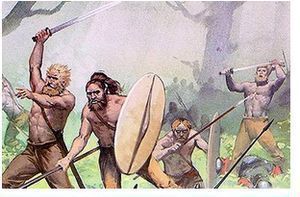 What's an ancient German tribe have in common with medieval church architecture?
What's an ancient German tribe have in common with medieval church architecture?
And what do flying buttresses have to do with horror fiction?
Finally, what's any of it got to do with black lipstick and body piercing?
Goth. Gothic. What do those terms mean, and how are they related? So let's find out.
The 1st piece of the puzzle starts with the GOTHS, a Germanic tribe mentioned by the Greeks way back in the 4th century B.C. We know them, of course, as the group that sacked Rome 700 years later, in 410 A.D.
For the 2nd clue, skip ahead to the 11th and 12th centuries, long after the fall of Rome, when a new form of architecture — featuring pointed arches, vaulted ceilings, and flying buttresses — sprung up in Western Europe. That design led to the great medieval castles and cathedrals.  Although today we refer to the style as GOTHIC, at the time it was called "French Work" because of its origin in France.
Although today we refer to the style as GOTHIC, at the time it was called "French Work" because of its origin in France.
But now jump to 1453 and the fall of the eastern remnant of the Roman Empire to the Ottomans. Driven out by the collapse of Constantinople, Greek scholars fled to the West, carrying with them the writings of the ancient Greeks and Romans.
Widely read throughout Europe, the classical writings were a revelation, sparking a rebirth — which we now call the Renaissance — in all branches of culture, including architecture. The classical Greco-Roman style, with its columns and domes and elegant proportions, became all the rage.
What about those glorious cathedrals and castles? Not so glorious. Seen as old and fusty, they came to be associated with a dark, barbarous past. From "barbarous" it was a short leap in imagination and linguistics to the "barbarians" who destroyed the classical world of Rome — the Goths. So that's how we got to GOTHIC architecture.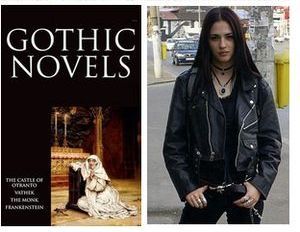 The 3rd clue takes us to 1764, when Horace Walpole published The Castle of Otranto: A Gothic Story. The novel — set in a dark, foreboding castle, complete with dungeons, secret pathways, mysterious supernatural elements, and a damsel in distress — was wildly successful, spawning an all new horror genre.
The 3rd clue takes us to 1764, when Horace Walpole published The Castle of Otranto: A Gothic Story. The novel — set in a dark, foreboding castle, complete with dungeons, secret pathways, mysterious supernatural elements, and a damsel in distress — was wildly successful, spawning an all new horror genre.
Over the years, similar types of works followed: Frankenstein, Hunchback of Notre Dame, Dracula, Fall of the House of Usher, and Phantom of the Opera are among the best known. All feature dark eerie settings — sinister castles, abbeys, monasteries, or old manses — that brought to mind the heavy, medieval architecture by then known as Gothic. And so we arrive at the GOTHIC novel.
Gradually, the emphasis of Gothic fiction shifted away from the dreary settings to the creatures at the heart of the stories — monsters, ghosts, ghouls, and vampires — or to the dark, brooding, sometimes villainous, human characters.
The 4th and final piece of the puzzle came in 1979, the year the post-punk band Bauhaus released "Bela Lugoi's Dead." The song refers to the 1931 film Dracula and its Hungarian star, Bela Lugosi. Bauhaus and other post-punk bands are credited with inspiring an underground cultural aesthetic — black clothing, nails, lips, and eyeliner — reminiscent of Gothic fiction. It's GOTH, man.
So here we are: we've gone from the GOTHS to GOTHIC to GOTHIC to GOTH. And it took only 2,300 years.
NEXT UP? We'll talk about the Gothic novel in the 21st Century. Stay tuned.


FICTION IS A MAGIC TRICK of sorts. But at its best it doesn’t just conjure up an imaginary world; it makes the real one disappear, it makes the author disappear. Only a book can do this — let you lose yourself so completely. So, if you can, forget about everything else. Just be there with the book.
Jami Attenberg, Author of All Grown Up
Interview, NY Times Book Review, March 26, 2017
And in the other corner . . .


A GREAT OBSTACLE to good education is the inordinate passion prevalent for novels, and the time lost in that reading which should be instructively employed. When this poison infects the mind, …[t]he result is a bloated imagination, sickly judgment and disgust towards all the real businesses of life.
Thomas Jefferson
Letter to Nathaniel Burwell, March 14, 1818
 New York, NY: If you like your books upbeat, you're in luck. After contentious debate within the ranks, American publishers say they will no longer publish DEPRESSING books.
New York, NY: If you like your books upbeat, you're in luck. After contentious debate within the ranks, American publishers say they will no longer publish DEPRESSING books.
"Given current anxieties over everything from global politics to the migratory TEXAS FIRE ANT, we cannot pile more misery on our readership," said Barry Bundlesnorp of the American Publishing Association.
Authors disagree. "We need our readers to feel MISERABLE now more than ever," author Ann Patchup said.
"They need to learn empathy, and the only way is by subjecting them to thoroughly depressing fiction," she added. "Personally, I PROMISE to do more for the effort."
Ms. Patchup was joined in her remarks by fellow author, Filup Roth. "SUFFERING brings enlightenment," he intoned. "I generally go for SEX in my books, but suffering gets you there, too."
Those authors, however, may be bucking the wishes of their most ardent fans. While on book tour, many find themselves confronted by ANGRY READERS, waving books and demanding an end to the crush of dreary novels that have recently crowded the market.
Even reviewers, usually strong proponents of bleak literature, have joined the nay-sayers. Said Byron Shelley of The Daily News, "I've RUN OUT OF WORDS for sad—you've got dreary, dark, depressing, doleful, dismal—I've used them all. Pretty soon all you're left with is 'down in the dumps.'"
The online community has weighed in, as well. Molly Lundquist of LITLOVERS asked, "Can you think of any other consumer product specifically designed to make its users miserable? Other than TREADMILLS? Of course not."
Cherie Belle Korteks, special to City Examiner
and LitLovers.
| Click on images | |||||
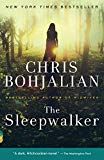 |
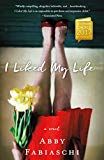 |
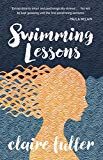 |
|||
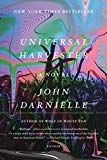 |
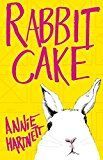 |
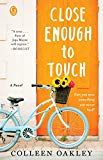 |
|||
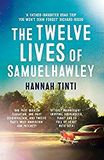 |
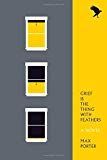 |
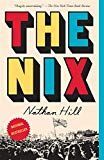 |
|||
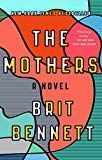 |
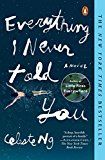 |
 |
|||
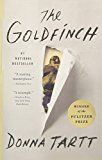 |
 |
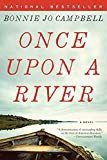 |
|||
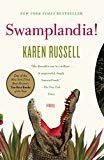 |
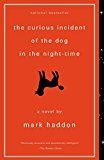 |
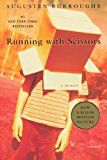 |
|||
Have you noticed the number of absent mothers at the heart of new novels lately? So far I count SEVEN—in the first quarter of 2017 alone—surely there are more.
1/10 The Sleepwalker
1/31 I Liked My Life
1/ 7 Swimming Lessons
1/ 7 Universal Harvester
3/ 7 Rabbit Cake
3/ 7 Close Enough to Touch
3/28 Twelve Lives of Samuel Hawley
Then there are last year's books, as well as those over the past several years—most famously The Goldfinch and Where'd You Go, Bernadette. We can even go back to the early-aughts.
The missing mothers in these stories TAKE OFF…
or wander off…
or die…
or are killed…
or kill themselves.
Sometimes it happens before the novel opens, sometimes within its pages.
Whenever or however they disappear, fictional moms leave heartbreak and loneliness in their wake—a grief so profound it shapes a character's motivations and actions throughout the novel.
It is an age-old literary trope, which authors use to set their protagonists on the path of the Hero's Journey—a quest for self-discovery, belonging, and self-acceptance.
One of the best missing mother novels? Dickens' David Copperfield—the mother of all missing mother stories.
By the way...I've written on a this subject a number of years ago. See Lost Mothers—Why authors bump off moms.
 Rachel Cusk, wants to reinvent the novel, at least according to the New York Times Book Review.* Just writing that makes me break into a sweat. Why do we have to reinvent the novel?
Rachel Cusk, wants to reinvent the novel, at least according to the New York Times Book Review.* Just writing that makes me break into a sweat. Why do we have to reinvent the novel?
Okay, I get it. It's a bit like composers wondering where to take symphonic music after Beethoven. Ludwig pretty much said it all.
Poor Johannes Brahms: when folks heard his first symphony, they went, "OMG! It's Beethoven's 10th." Or so the story goes.
After 200+ years of the novel as art form, it's understandable that authors might want to try something different.
Perhaps you've noticed the trend toward SHIFTING POINTS OF VIEW, different characters taking turns at the helm…
. . . surely you've noticed the frequent use of SHIFTING TIME FRAMES, the lack of straightforward chronology…
. . . or maybe you've noticed the use of ALTERNATIVE TEXTS: news clips, diary entries, handwritten letters, scholarly papers, emails, even PowerPoint…
. . . how about the use of ALTERNATE REALITIES?
Sometimes it's hard to tell exactly where you are...or what character you're following—one of the criticisms leveled at Paul Auster's otherwise highly touted new book 4321. Other times, all this narrative disruption can make it hard to engage with the characters.
Yet we know people see and experience life differently. And that is precisely what the new fiction is trying to get at—to point out that human perception isn't cut in stone, that there is more than one way of seeing a particular event, and that memory is faulty.
Nonetheless, don't you miss the comfort of a single narrator? I do. I have a yen for that 19th-century style of writing in which someone steps onto your front porch, claims a seat, and tells you a grand story.
I hate being old-fashioned and curmudgeonly. But I'm weary of the fact that EVERY new book I pick up messes with point of view and chronology. Friends, I just had to get that off my chest.
* New York Times Book Review, January 29, 2017, cover review of Rachel Cusk's Transit.
 Ha! And you thought librarians were goody-two-shoes. Well, here's a TRUE CRIME story that'll make your toes curl.
Ha! And you thought librarians were goody-two-shoes. Well, here's a TRUE CRIME story that'll make your toes curl.
The AP reported that the county library in Sorrento, Florida, was caught red-handed in a devilishly clever SCAM. Over the course of nine months some 2,000 books had been checked out by a fake card holder.
Now THAT, dear reader, is registration fraud. But get this: the books were always returned. Within an hour. Undamaged.
The Big Reader was Chuck Finley, except Chuck Finley doesn't exist (at least with an East Lake Library card). It turns out two librarians had dummied up an ID and used it to check out books, dozens at a time—everything from John Steinbeck's Cannery Row to Why Do My Ears Pop, a children's book by Ann Fullick.
It was all for a good cause—to save the books from the chopping block because books that HAVEN'T BEEN CHECKED OUT for a period of time are removed from the county system. So the two librarians took it upon themselves to SAVE as many books as they could.
Until someone ratted them out. What a kill joy.
But who's the bad guy here—the fink or the perps? Bleed though our hearts may, it's hard to say. With some 300,000 titles published a year by major U.S. houses (50,000+ for fiction alone), libraries face a serious SHORTAGE of space. Budgets aren't the only thing being squeezed… so are books on shelves.
Still, how can we NOT relate to these two benighted—or beknighted—souls, so enamored of books that they can't bear to have them tossed in the dust bin of history? (Btw, I've no idea what's become of our librarians—to say nothing of all the BOOKS.)
A humorous yet sad tale.
 So imagine: you're walking into one of your local library branches, as I was recently, and you find right in front of you a sumptuous table, positively laden with tote bags—each of them charmingly tagged by theme and filled with used books.
So imagine: you're walking into one of your local library branches, as I was recently, and you find right in front of you a sumptuous table, positively laden with tote bags—each of them charmingly tagged by theme and filled with used books.
For $10 any Book Bundle could be yours. Patrons get the books (from 4 to 6), AND they get the tote bag. It's enchanting.![]()


| Government Clamps Down on Long Book Titles | ||

Dec. 12, 2016: Washington, DC— In a rare show of bi-partisanship, Congress cried foul today when the Department of Homeland Security moved to put an end to excessively long book titles. Vulnerable to hacking Disturbing trend |
Mr. Combover gave as an example Margot Lee Shetterly's Hidden Figures: The American Dream and the Untold Story of The Black Women Mathematicians Who Helped America Whoop the Soviets' Ass and Win the Space Race All the While Raising Their Children and Struggling Against Racism and the Man. Buried code "We have reason to believe there's a piece of code buried in that title," he said. "Why else would anyone write like that?" Other examples include the new biography by Julia Baird—Victoria: The Queen: An Intimate Biography of the Woman Who Became Queen at Eighteen, Loved Sex, Had Nine Children and a Fussy Husband, Yet Still Found Time to Rule a Vast Empire that Would One Day Crumble to Nothing— Further Proof (As If One Needed It) that Nothing Lasts Forever. |
Confusing Lengthy titles have dismayed those in the book business, though for different reasons. "Long titles confuse YOUNG people. They read the titles and think they've read the book," said Steve Holt of Steve Holt, Steve Holt, Inc. "Titles are longer than Twitter posts," he said, "and that's a problem." Fronta Loeb, special to The Daily News and LitLovers. |
Site by BOOM
![]()
LitLovers © 2024
